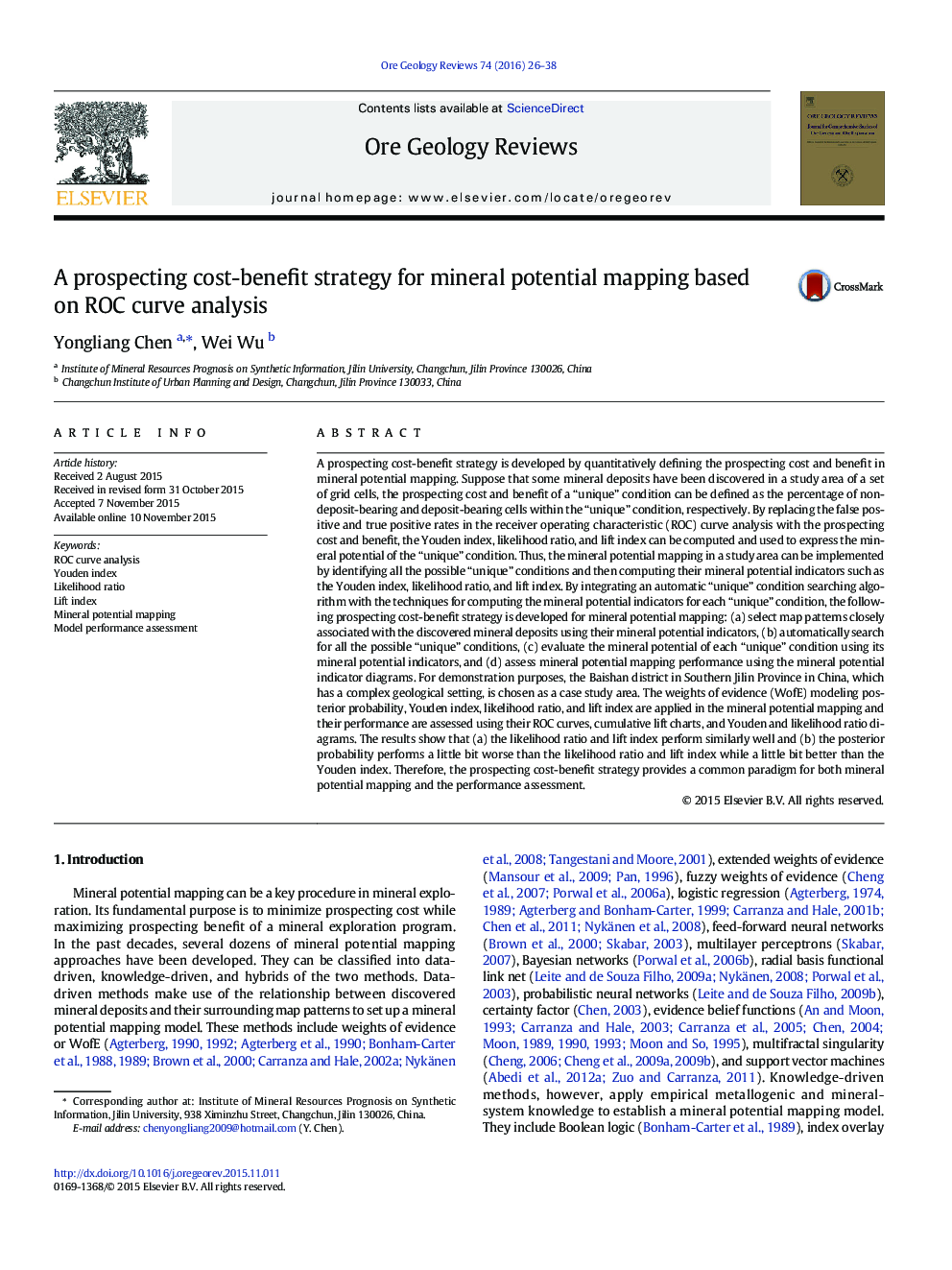| کد مقاله | کد نشریه | سال انتشار | مقاله انگلیسی | نسخه تمام متن |
|---|---|---|---|---|
| 4696821 | 1637232 | 2016 | 13 صفحه PDF | دانلود رایگان |

• Prospecting cost and benefit are defined in mineral potential mapping.
• Select binary map patterns using lift index.
• Select continuous map patterns using AUCs and ZAUCs.
• Automatically search “unique” conditions in a study area.
• Evaluate model performance using Youden and likelihood ratio diagrams.
A prospecting cost-benefit strategy is developed by quantitatively defining the prospecting cost and benefit in mineral potential mapping. Suppose that some mineral deposits have been discovered in a study area of a set of grid cells, the prospecting cost and benefit of a “unique” condition can be defined as the percentage of non-deposit-bearing and deposit-bearing cells within the “unique” condition, respectively. By replacing the false positive and true positive rates in the receiver operating characteristic (ROC) curve analysis with the prospecting cost and benefit, the Youden index, likelihood ratio, and lift index can be computed and used to express the mineral potential of the “unique” condition. Thus, the mineral potential mapping in a study area can be implemented by identifying all the possible “unique” conditions and then computing their mineral potential indicators such as the Youden index, likelihood ratio, and lift index. By integrating an automatic “unique” condition searching algorithm with the techniques for computing the mineral potential indicators for each “unique” condition, the following prospecting cost-benefit strategy is developed for mineral potential mapping: (a) select map patterns closely associated with the discovered mineral deposits using their mineral potential indicators, (b) automatically search for all the possible “unique” conditions, (c) evaluate the mineral potential of each “unique” condition using its mineral potential indicators, and (d) assess mineral potential mapping performance using the mineral potential indicator diagrams. For demonstration purposes, the Baishan district in Southern Jilin Province in China, which has a complex geological setting, is chosen as a case study area. The weights of evidence (WofE) modeling posterior probability, Youden index, likelihood ratio, and lift index are applied in the mineral potential mapping and their performance are assessed using their ROC curves, cumulative lift charts, and Youden and likelihood ratio diagrams. The results show that (a) the likelihood ratio and lift index perform similarly well and (b) the posterior probability performs a little bit worse than the likelihood ratio and lift index while a little bit better than the Youden index. Therefore, the prospecting cost-benefit strategy provides a common paradigm for both mineral potential mapping and the performance assessment.
Figure optionsDownload as PowerPoint slide
Journal: Ore Geology Reviews - Volume 74, April 2016, Pages 26–38